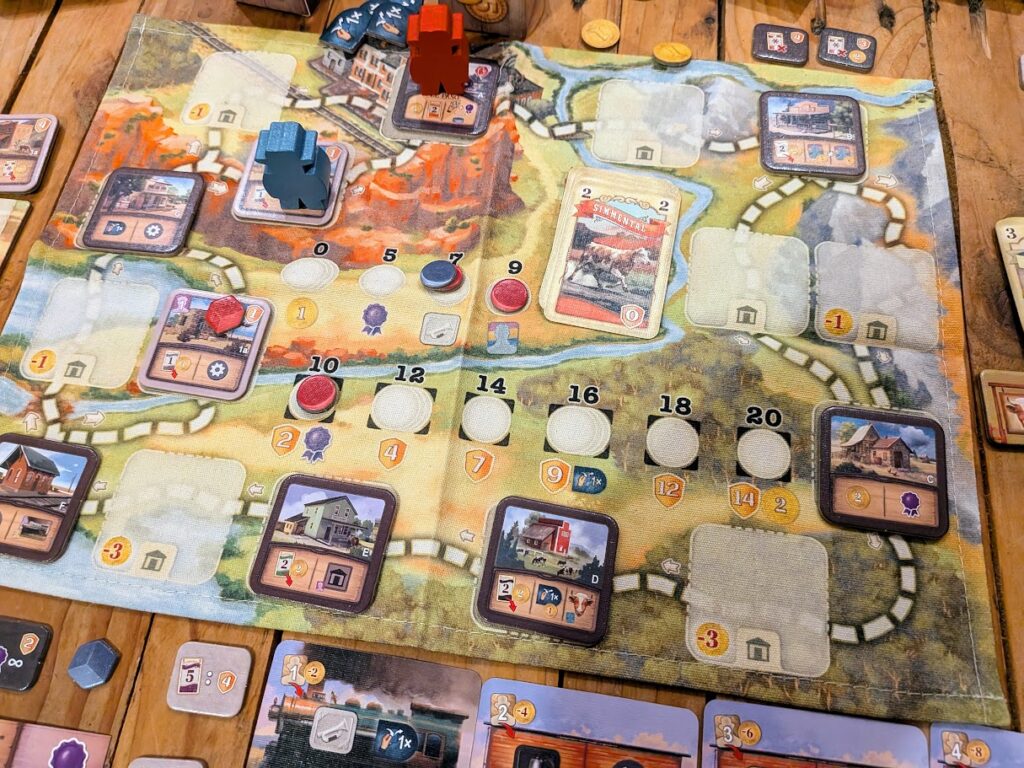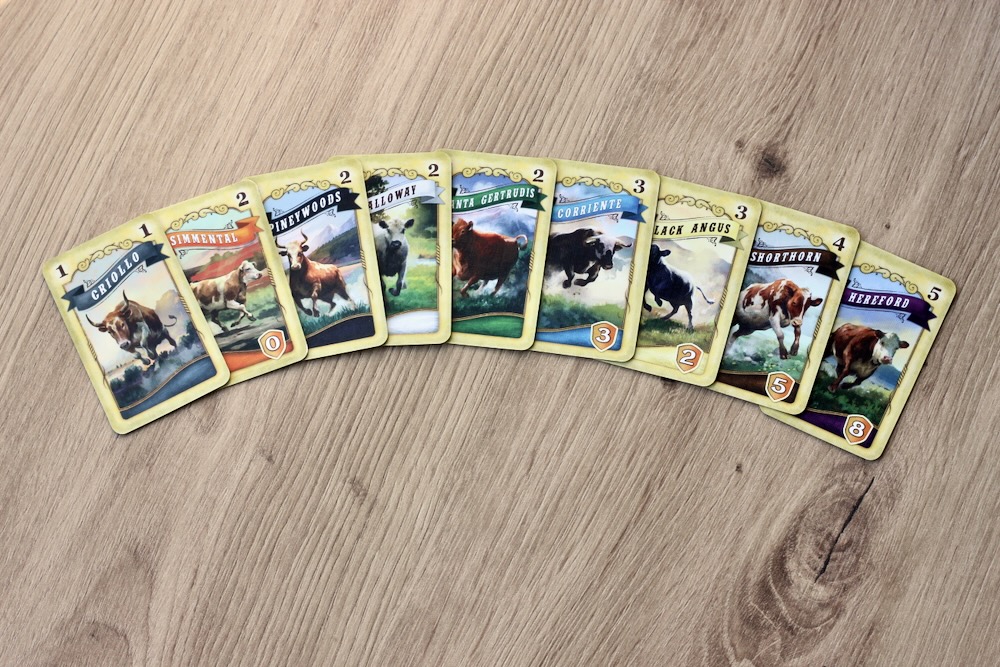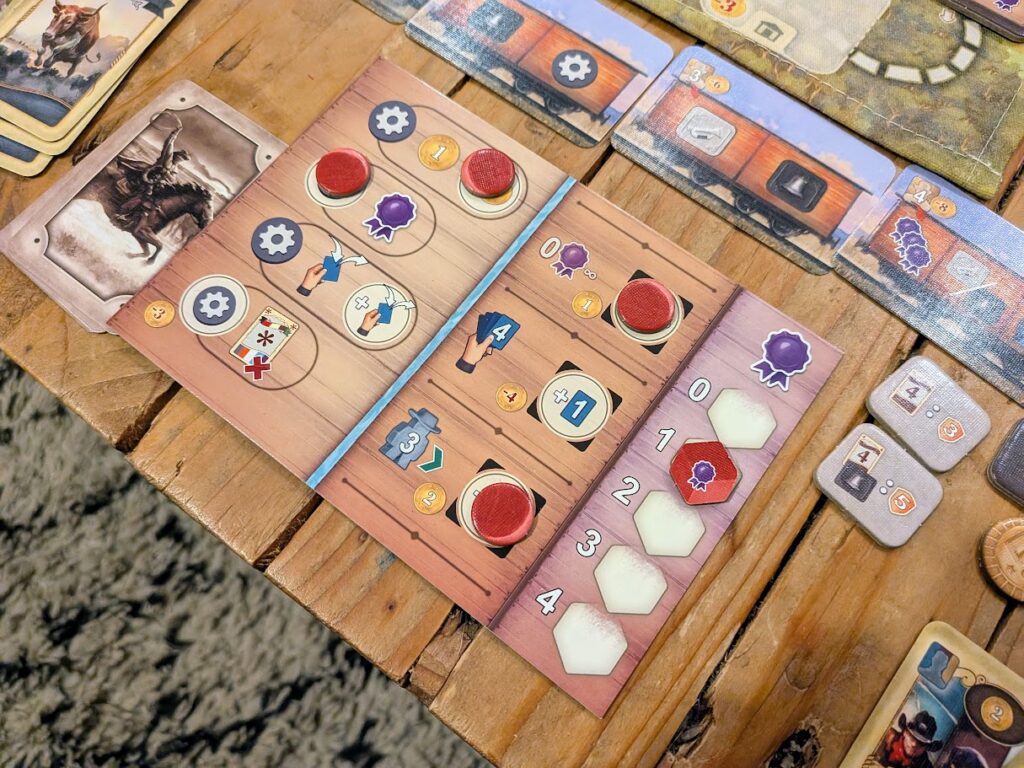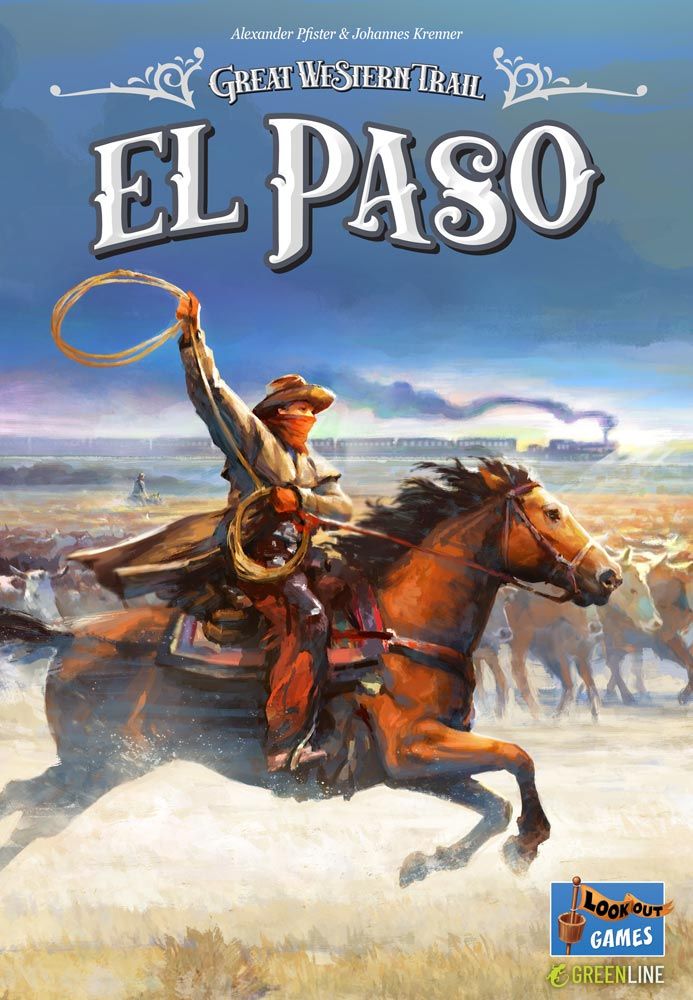A review copy of GWT: El Paso was provided by Asmodee UK. Thoughts & opinions are my own.
A long time ago I interviewed Alex Pfister and found out some pretty interesting information about sequels to his smash hit, Great Western Trail. The second edition of the original game came out, along with versions that are variations on a theme, set in Argentina and New Zealand. They’re great games, but cater for an audience who already love GWT. Seemingly coming from out of nowhere, Lookout Games then blindsided us with Great Western Trail: El Paso, a new, smaller, more accessible version of the game.
My first reaction to the game was “Why? Who asked for this? Do we need this?”, and in a dismissive way. Then I sat and thought about it. Lookout Games aren’t stupid. They’re not out to damage their reputation, and they’re certainly not on the list of publishers I’d think of as trying to make money by carelessly milking franchises. With a less cynical lens cast over the game, I completely understand why the game exists, and I’ll go one step further and say that I think it’s a brilliant idea, and a great game. Not without its issues, but great all the same.
The wild refined West
The essence of Old Paso is 100% distilled GWT. The loop of heading around the map, developing buildings, and acquiring and selling cattle is all there. But in all ways, the game is smaller. The map is smaller for starters, and it’s not even made of cardboard any more. It’s a kind of hessian, folded, fabric map that’s in keeping with their Greenline brand. No plastic in this box, varmint. There are fewer spaces to build on the map, which encourages upgrading buildings as much as it does spawning new ones, which is something I never really felt too pressed to do in the original game.

The biggest change comes in the cardplay. Instead of taking engineers and cowboys from the worker market on the side of the board, these folk are now cards which go into your personal deck alongside the moo-cows. You play them during a build, buy, or train action in order to increase the action’s strength. So while it’s not a new concept for GWT per se, it feels like a big change to the deck-management aspect of the game. I like it. It’s different enough to not feel like it’s just GWT: Pocket Edition or the equivalent of resorting to magnetic travel Scrabble when you don’t have the space for the full thing.
Other than that change, though, the rest of the game will feel immediately familiar to anyone who’s played GWT more than once. The routine of getting different kinds of cows to keep your deck diverse is still rewarded by bigger delivery scores when you reach Kansas El Paso. The little buildings you construct and choose to stop at along the way are similar to those in El Paso’s bigger brother, but different enough to make you go “Ooh, that’s new” on occasion.
Ten pounds o’ crazy in a five pound sack
This is all well and good, but it brings me back around to my original question. Who is Great Western Trail: El Paso for, and why?
As far as I can tell, there are two target markets for El Paso. First up, you got the long in the tooth veterans of GWT who love the game, but know that they don’t get to play it as often as they’d like to. It’s pretty average these days in terms of set-up and tear-down time, and the teach isn’t anything like as arduous as introducing someone to a game like On Mars. But it still takes time, and space. It still takes a group of people happy with the game’s complexity who want to play it ahead of whatever’s riding the latest hype wagon.

Secondly, you’ve got the people who are dipping their toes in the warm, azure waters of boardgames, but don’t feel ready to plunge in past the low tide mark. It’s a cool theme, rounding up cows in the American West and making your fortune, and it looks gorgeous. That said, if someone’s only modern tabletop game experience was Exploding Kittens or Carcassonne, they might find jumping into full-fat GWT a bit too much. El Paso still has plenty of room for strategy for nerds like you and me, but it looks, feels, and indeed is more accessible.
Playing El Paso is like having a Yankee Candle that smells like freshly baked bread. You love the smell, and it feels nice to be around, but it hasn’t taken hours and left you with a mountain of washing up. If that’s what you want – the essence – it’s great. The only people who might be disappointed are the people who want to tuck into a hunk of warm, buttery bread. I’m hungry now and my metaphor has gone awry, but I think we got there.
Final thoughts
Great Western Trail has stood the test of time for a reason. It’s a brilliant game. In all the years I’ve been teaching and playing GWT I’ve only come across one person who didn’t like it, and then it was just because you can’t tell who’s winning until the scoring at the end of the game. Great Western Trail: El Paso is still GWT. It still feels like GWT. It still plays like GWT. It has the soul of GWT. But it’s different.

The biggest problem El Paso has is how quickly it seems to be have been rushed out of the door from the printers. There are two pretty big errors, which may be rectified by the time you read this and buy your own copy, but they’re worth knowing about ahead of time. Lookout Games have an appendix right here with the detail, but in short the maximum number of cow cards you may remove from your deck is five, and on building tile 2a you can choose either of the actions, not do both. In a deck-management game, missing a rule like the former from the rulebook is really sloppy, and the latter of the two makes building 2a way over-powered.
Quality control issues aside, El Paso is great. It’s cheap, it’s small, it’s faster than the original, and it feels like the original game. What’s not to like? Some people aren’t happy with the big cowboy meeples or cardboard tokens, but it’s not a deal-breaker by any means. If you like Great Western Trail, or if you’ve been tempted in the past but aren’t sure if it’s a game for you or your group, grab a copy and you’ll have a rootin’, tootin’, great time. Or head over to Board Game Arena and try it out now.
Enjoying this article? Consider supporting me.

Great Western Trail: El Paso (2025)
Design: Alexander Pfister, Johannes Krenner
Publisher: Lookout Games
Art: Chris Quilliams
Players: 1-4
Playing time: 60-90 mins


